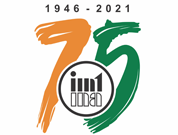
ETA's Four Square Test Rig for Component series-parallel testing

- Introduction to basics
- Purpose
- Components
- Explanation
- Applications
- Introduction to basics
Test rigs are machines for testing the performance of manufactured machine components. The components can be tested under various loading, speed and ambient conditions. Accelerated tests can be done for millions of cycles of operations or till failure, as required.
- Purpose
To find a better method , for testing more than one components parallelly, with very less power, with a single loading / torqueing actuator.
- Components
One such component is the propeller shaft. Axles are also similar. These must be tested at speeds and loads compatible to actual and higher loads in case of accelerated tests. Generally, it involves running the machines consuming power and is undesirable.
Hence, an effort has been made to test 4 components-2 sets of 2 in series working against each other.
This essentially means that the first set delivers power to the second set and then it is fed back to the first set. - Components
One such component is the propeller shaft. Axles are also similar. These must be tested at speeds and loads compatible to actual and higher loads in case of accelerated tests. Generally, it involves running the machines consuming power and is undesirable.
Hence, an effort has been made to test 4 components-2 sets of 2 in series working against each other.
This essentially means that the first set delivers power to the second set and then it is fed back to the first set.
- Explanation
As shown in the sketch, all the four shafts are connected. At the drive point, there is a mechanism with helical slot drive, which will induce torque in the whole system. The arrangement can vary the torque in the system while running. This is done using a servo motor - ball screw combination.
The main motor drives the whole system at the desired speed. Both the speed and torque are measured and can be plotted. Since the torque is produced by differential torsional feedback, there is no power required for achieving this. The power required for testing would only be frictional losses in the whole system.
- Applications
Any rotating power transmission component can benefit from this test method.
- Differentials
- Propeller Shafts
- Steering Columns
- Universal Joints
- Drive Shafts
- Half Shafts
- Torque Shafts ... and many more ...
The differential angular displacement in the system is achieved by a purely mechanical device.
While using the HTML editor, check the cleaning options you want to perform when you press the main Clean button or execute them one by one.
© IMTMA 2024. All rights reserved
